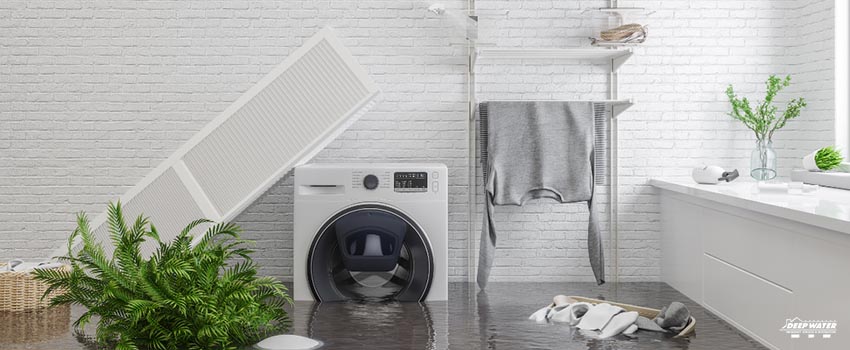Water damage mitigation is the process of restoring a given property to its original condition before water intruded and damaged the area. It will typically include site inspection, water extraction, dehumidification, and sanitation. Reconstruction is a possible additional step, but only if it’s necessary.
Although water damage rehabilitation does not usually require any certification for those involved in the work, it is still better if you hire a certified water damage specialist who has the necessary tools and knowledge.
A professional water damage expert can easily identify the cause of the disaster the moment an inspection is made on the affected property. Following the inspection, he or she can provide you with professional advice on how to tackle the problem and, of course, give you a detailed quote on the cost.
Importance of Water Damage Mitigation Service
As a homeowner, water damage is a problem that you must deal with quickly by taking immediate action. If not, it can ruin everything that you worked hard for, not to mention expose you to the following problems:
1. Health Risks
Mold growth is an immediate concern with water damage because it can begin in a matter of hours. For people with chronic health conditions such as asthma and allergies, molds can pose a serious health risk.
Also, if the contaminated water seeps into your water supply and is unknowingly consumed, it could lead to more health problems, including diarrhea, stomach pain, and fever. Thus, it is important that water damage is quickly addressed.
2. Safety Concerns
Water damage mitigation is crucial because the structural integrity of a property can be affected. Walls, ceilings, and floors could collapse if water seeps through these areas.
Electrocution is another major problem that can result from water damage. Water is a conductor of electricity, so when the two come into contact with one another, it can cause serious injury and even death. If water damage has reached your electrical outlets, turn off your power supply and call a professional electrician so an inspection can be done.
3. Financial Woes
Water damage can be minimized if you address the problem as soon as possible. Refusing to get a water mitigation service can only lead to more expensive mitigation jobs because subsequent water damage can occur. It could mean more extensive repairs and higher labor costs.
How Long Does Water Damage Mitigation Take?
Water damage rehabilitation completion will vary as it will often depend on how long it takes for the affected materials to dry up. On average, however, one room can take 72 hours to dry out and be ready for reconstruction. The entire water damage repair process can take 1-2 weeks to complete. The timeframe can even extend to a few more weeks since the damaged areas must be completely dry before a mitigation contractor can begin the needed repairs.
While it’s understandable that many property owners want their lives to return to normal quickly following a disaster, every repair project is different, as the extent of the damage and the materials involved will have to be considered. Often, the gravity of the problem is more severe than what can clearly be seen at first glance.
Steps Involved in Water Damage Mitigation
Water damage specialists usually follow these five steps when performing rehabilitation work:
1. Damage Inspection
A specialist will conduct a water damage inspection and assessment to determine the source of the water, the water contamination type, and the water damage classification.
Identifying the water source is vital as this is directly related to the water damage’s cause and extent. It can be difficult to accomplish at times, especially in the case of a flood where water has seeped into a property through multiple entry points.
If the specialist successfully identifies the water source, classifying the water contamination is the next step. From here, the type of decontamination method needed will be decided.
2. Standing Water Removal
The extraction of standing or stagnant water is crucial when the basement has become flooded. This process normally uses extractors like submersible pumps and industrial vacuums.
After all the standing water has been removed, wet spots can be dried further using portable dry/wet vacuums. The specialist might also use a moisture monitor or a thermal infrared camera. It is because residual surface water can still be behind walls and under the floorboards even after vacuuming.
3. Drying and Dehumidification
The specialist will likely use the same equipment in water extraction when drying and dehumidifying the affected areas of the property. Doors and windows may also be opened to improve air circulation in the affected areas.
This part of the mitigation process can be more time-consuming than the removal of standing water. It is particularly true if the water damage has been categorized as Class 3 or 4, where the removal of some parts of the walls or floors is needed.
4. Cleaning and Sanitation
This step is risky, so the specialist must wear personal protective equipment (PPE), including an N95 mask, gloves, and rubber boots. The same equipment for extraction and dehumidification will be used here and often applied with an antimicrobial agent to clean and disinfect all surfaces thoroughly.
5. Repair and Mitigation
All unsalvageable items like carpet padding, low- to medium-density trim boards, and drywall installed below the flood line will be removed. Deep cleaning of the carpets is possible in some cases, but ideally, it’s best to replace them.
Depending on the water damage category, wooden trim boards can be used instead of drywall. Reconstruction of the property is usually recommended if the water damage was caused by a natural disaster.
Key Takeaway
Water damage mitigation can appear like a fairly simple process to many homeowners. It is hardly an accurate assumption because the process is actually complex and carries a certain degree of danger. This is why property mitigation is best left in the hands of professionals.
Given the complexity of a mitigation project, it should be clear that this cannot be completed in just a couple of days or even a whole week. Many homeowners will find the timeframe too long. The drying phase alone can take weeks, while the mitigation work can last at least a month. Still, for a professional water damage mitigation company, this is the minimum requirement to ensure that your damaged home can be returned to its original beauty.
Deep Water Emergency Services and Mitigation can help you restore a ruined house due to water damage.
Deep Water Emergency Services and Mitigation is the acknowledged expert in water damage mitigation. If you’ve recently been a victim of water damage, let us help you recover from this terrible disaster.
We have a professional Dallas water damage mitigation team that can conduct the initial damage assessment and provide you with the available options. Call us today so we can help you get back on your feet as soon as possible.






